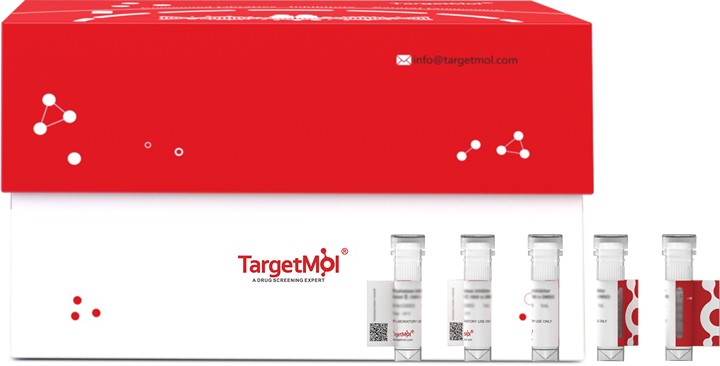Shopping Cart
- Remove All
 Your shopping cart is currently empty
Your shopping cart is currently empty

TGF beta 2 Protein, Mouse, Recombinant (His) is expressed in HEK293 mammalian cells with His tag. The predicted molecular weight is 46.9 kDa and the accession number is P27090.

| Pack Size | Price | Availability | Quantity |
|---|---|---|---|
| 10 μg | $212 | In Stock | |
| 100 μg | $1,080 | 7-10 days | |
| 1 mg | $5,590 | 7-10 days |
| Biological Activity | The whole mouse TGF beta 2 protein showed no activity. |
| Description | TGF beta 2 Protein, Mouse, Recombinant (His) is expressed in HEK293 mammalian cells with His tag. The predicted molecular weight is 46.9 kDa and the accession number is P27090. |
| Species | Mouse |
| Expression System | HEK293 Cells |
| Tag | C-His |
| Accession Number | P27090 |
| Synonyms | transforming growth factor β2,transforming growth factor beta 2,TGF-β2,Tgf-β2,Tgf-beta2,TGF-beta 2,Tgfb-2,TGFB2,TGF β2,BB105277 |
| Construction | A DNA sequence encoding the mouse Tgfb2 (NP_033393.2) (Met1-Ser414) was expressed with a polyhistidine tag at the C-terminus. Predicted N terminal: Ser 20 |
| Protein Purity | > 90 % as determined by SDS-PAGE  |
| Molecular Weight | 46.9 kDa (predicted) |
| Endotoxin | < 1.0 EU/μg of the protein as determined by the LAL method. |
| Formulation | Lyophilized from a solution filtered through a 0.22 μm filter, containing PBS, pH 7.4. Typically, a mixture containing 5% to 8% trehalose, mannitol, and 0.01% Tween 80 is incorporated as a protective agent before lyophilization. |
| Reconstitution | A Certificate of Analysis (CoA) containing reconstitution instructions is included with the products. Please refer to the CoA for detailed information. |
| Stability & Storage | It is recommended to store recombinant proteins at -20°C to -80°C for future use. Lyophilized powders can be stably stored for over 12 months, while liquid products can be stored for 6-12 months at -80°C. For reconstituted protein solutions, the solution can be stored at -20°C to -80°C for at least 3 months. Please avoid multiple freeze-thaw cycles and store products in aliquots. |
| Shipping | In general, Lyophilized powders are shipping with blue ice. |
| Research Background | TGF beta 2 (Transforming growth factor beta 2), an extracellular glycosylated protein, which belongs to the TGF-beta family. TGF-beta regulates key mechanisms of tumor development, namely immunosuppression, metastasis, angiogenesis, and proliferation. TGF beta 2 suppression is a promising therapeutic approach for malignant tumor therapy. The signaling pathway of TGF beta 2/Smad plays an important role in the pathological process in posterior capsule opacification (PCO) after cataract surgery. Silencing Smad2 and Smad3 efficiently blocked the effect of TGF beta 2 on cell proliferation, migration, and extracellular matrix production. TGF beta 2 activation of MEKK3/ERK1/2/5 signaling modulates Has2 expression and hyaluronan (HA) production leading to the induction of epithelial to mesenchymal transformation (EMT) events. Besides, the upregulation of the TGF beta 2 level is a common pathological feature of Alzheimer's disease (AD) brains and suggests that it may be closely linked to the development of neuronal death related to AD. |

Copyright © 2015-2025 TargetMol Chemicals Inc. All Rights Reserved.